Secret Art of Survival - Exhibition panels, artwork and labels
Environment
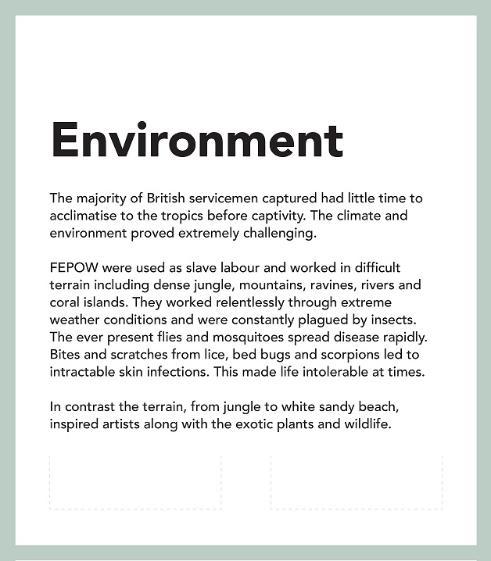
Environment - Artwork & Labels
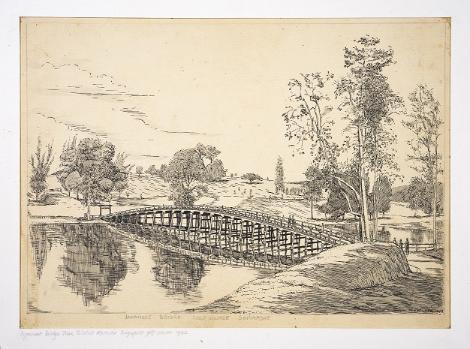
Bridge to Shinto Shrine, Singapore, September 1942
By Gunner William Carthew Wilder, 135 Field Regt, RA
Ink wash on paper
Loaned by Anthony Wilder
Gunner Wilder was a trained and accomplished artist. His exquisitely-detailed studies, sketches and portraits done in captivity reflect his talent.
This view of a wooden bridge constructed by POW during the first months of captivity in Singapore, was one of a series of specially-commissioned studies for Captain Suga, the Japanese commandant of Sime Road POW construction camp.
The bridge crosses a lake linking the newly-built road across the hallowed turf of the Royal Singapore golf course, leading to the large Shinto Shrine to the Japanese war dead. Suga learned that Wilder was an artist and gave him the commission, along with an official pass and necessary materials, to record the construction of the Shrine.
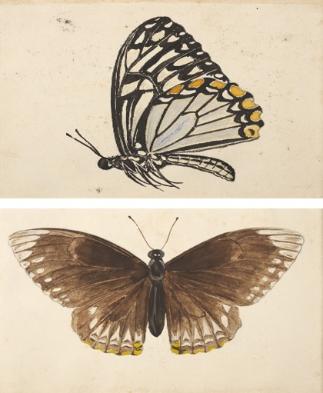
By Capt. Robert Stevenson Hardie, 3rd Vol Field Amb FMSVF
Watercolour gouache on paper
Loaned by the Family of Lt Col. A.A. Johnson MC 4th Btn Suffolk Regt
These two small detailed watercolour studies of tropical butterflies were commissioned by Lt Col. A.A. Johnson at Takanun camp in northern Thailand sometime during 1943. Johnson was one of the senior officers in camp and had also been Senior British Officer in charge of 244Km camp on the railway. He believed the best way to help the men under his command was to keep them positively engaged and distracted from the rigours of their daily existence. He had a passion for butterflies and orchids which he collected, commissioning artists to record them. Hardie did several studies of both.
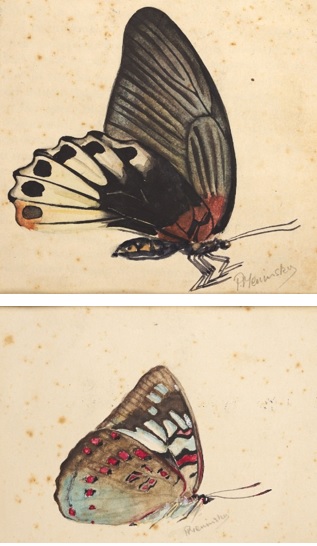
By Bombardier Philip Meninsky, 1 Cambs Regt., RA
Watercolour and Gouache
Loaned by the Family of Lt Col. A.A. Johnson MC 4th Btn Suffolk Regt
The study on the left is beautifully detailed. When you look at the butterfly’s zig-zagged legs you can see where the brush touched the paper over 76 years ago, leaving a small pool of paint before the brush flicked it on towards the next joint.
Philip Meninsky was the son of the famous British artist Bernard Meninsky. In addition to these natural studies he also did a great deal of medical artwork for the doctors during captivity.
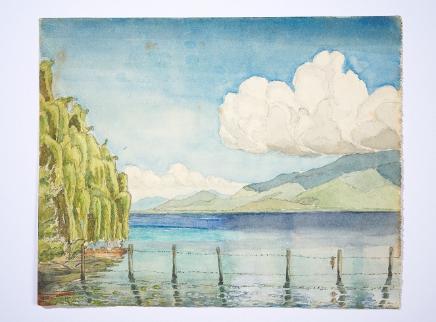
By Fl/Lt Frank Richard ‘Dickie’ Philps, RAF medical officer
Watercolour and pencil on paper
Loaned by the Philps Family
FEPOW artists like Philps, involved in medical care in captivity, must have found some mental escape from their relentless responsibilities. Their art reflects a form of self-help therapy, expressing a need to document, through pencil, pen, ink and watercolour, the exotic and beautiful landscapes, flora and fauna, all around.
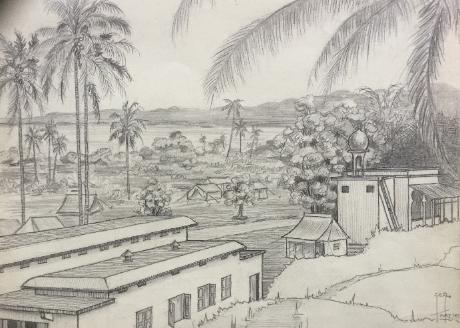
By Sapper Geoffrey Barlow Gee, 560 Field Coy, RE
Pencil on paper
Loaned by the Cordingly Family
Sapper Geoffrey Gee was a trained commercial artist. His highly stylised and distinctive signature is clearly visible in the bottom right-hand corner.
The building on the right, centre, had been a small mosque, it’s minaret, or tower, and dome being clearly visible. During the occupation of the area by POW, this was converted into a small church, known as St George’s Chapel. Padre Cordingley was one of the British Army chaplains who led worship at St George’s Chapel and Gee gave this small sketch to him.